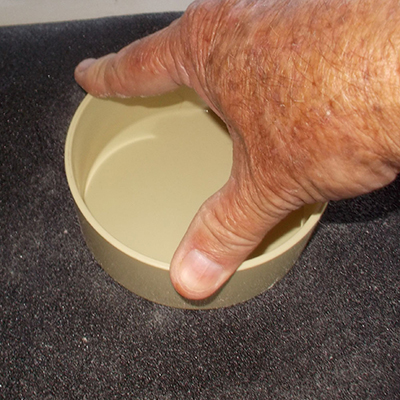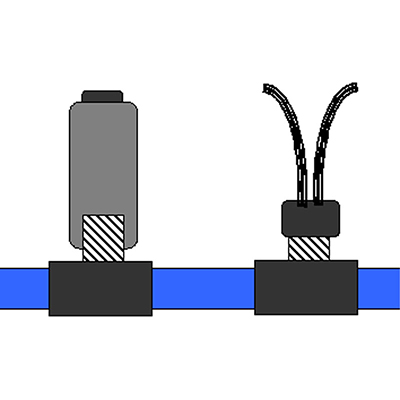20 April 2017

Fixing a Popup Irrigation System
What to do when an Irrigation Pop-up Refuses to Pop
With the drought that the country is currently experiencing, the water table in many areas has fallen, which means that borehole and well-point pumps have to work harder to get water to the surface, this often means lower pressure and pop-up irrigation heads that refuse to pop up.
The problem is that before the pop-up fully rises and seals itself, there is quite a bit of leakage, and while in good times the pressure of the water coming from the pump is enough to overcome this leakage and push the pop-up properly to seal it, when the water pressure is lower, the pump cannot deliver the required pressure – so here’s a reversible solution that can cure the problem, and then when the good rains come again and the water table rises, you can revert to the original pop-up.
All that it entails is substituting the pop-up with an irrigation tube feeding a micro jet on a riser. This will draw less water, which means an increase in the pressure, and so you might need to replace just one pop-up in this fashion in order to enable the pump to push the other two or three on that station up properly.
So here goes…
Materials:
- You will need a cap – to cap the pop-up ‘T’-piece feeder
- 4mm irrigation tube
- 4mm connector/s
- riser/s
Method:
- The materials. We wanted to use two micro jets, plus two connectors, and the cap.

- The end of the connector has a diameter of just on 3mm, so we used a 3.2mm bit.

- Place the cap on a piece of scrap and drill the hole/s for the connectors.

- Ensure that the holes are well within the sealing flange on the cap, otherwise you will have trouble screwing the cap on to the riser ‘T’-piece feeder, and it will probably leak.

- Then we pushed the ends of the two connectors into the holes we drilled for them, and then (with scrap wood as cushions) placed them in a bench vice and seated them fully. Their cone shape ensured that they would be locked in place, and as the holes were slightly smaller in diameter than the connector shaft, it was a very tight – watertight – fit. This shows the two connectors fully seated.

- We ensured that we had plenty of 4mm tubing so that we could move the micro jets to wherever needed.

- Whether you need to bury the 4mm tubing as we had to do here, depends on where your irrigation pop-ups are situated, but we had to as the pop-up is up against a paved area and waters lawn and shrubs. So, starting from the pop-up, we dug a narrow trench, about 50mm deep, towards the area we needed watering. Burying the tubing ensured it would be kept safe from mowers, and of course it looks better than tubing snaking over a lawn.

- Digging the trench as we did here ensures that the lawn divots can be popped straight back afterwards.

- After unscrewing the pop-up and screwing on the end-cap, with tubes already connected, we laid the latter in their trench and then replaced the divots of lawn.

- We also decided to cap the protective pipe that kept the pop-up from being damaged by trimmers and so on. All we wanted was a loose cap that could be removed easily (when reverting to the pop-up again) so we selected a 100mm Ø end-cap and decided to paint it green, to merge in better with the lawn. The first step is to ‘key’ the surface, which you do by giving the cap a rough sanding; this roughens the surface and enhances the paint’s ability to adhere to the surface.

- The completed job. Within a couple of weeks, the lawn will send runners over it, making it virtually undetectable.

- It is good idea to run the system for a few seconds, without the micro jet on the end of the tube, to flush the system of any grit that might have got in when the made the substitution. Then fit the micro jet of choice, and your irrigation system is doing its work again.

- The illustration shows how the riser (left) is substituted for a micro jet or micro jets until the ground water situation improves.
